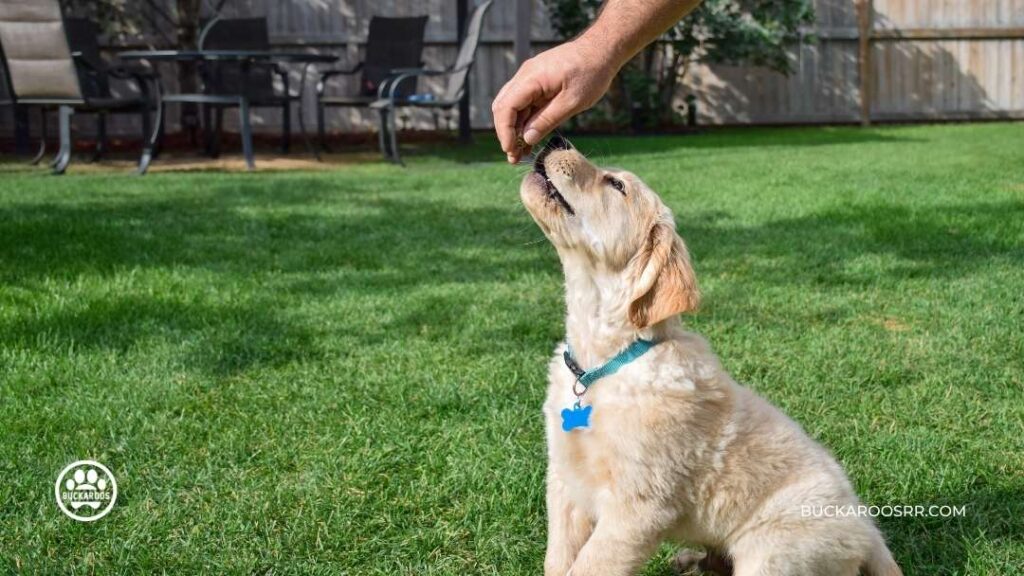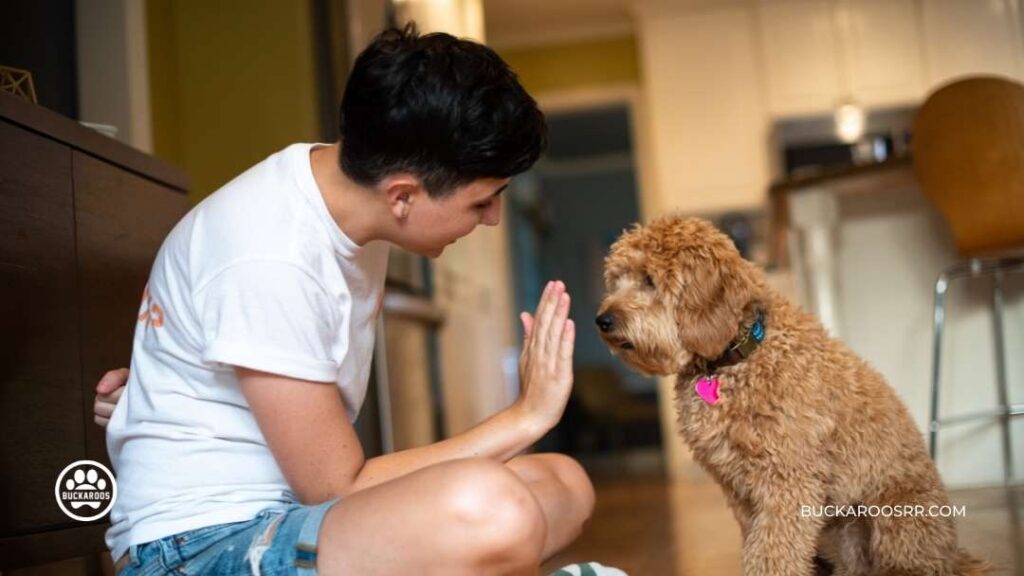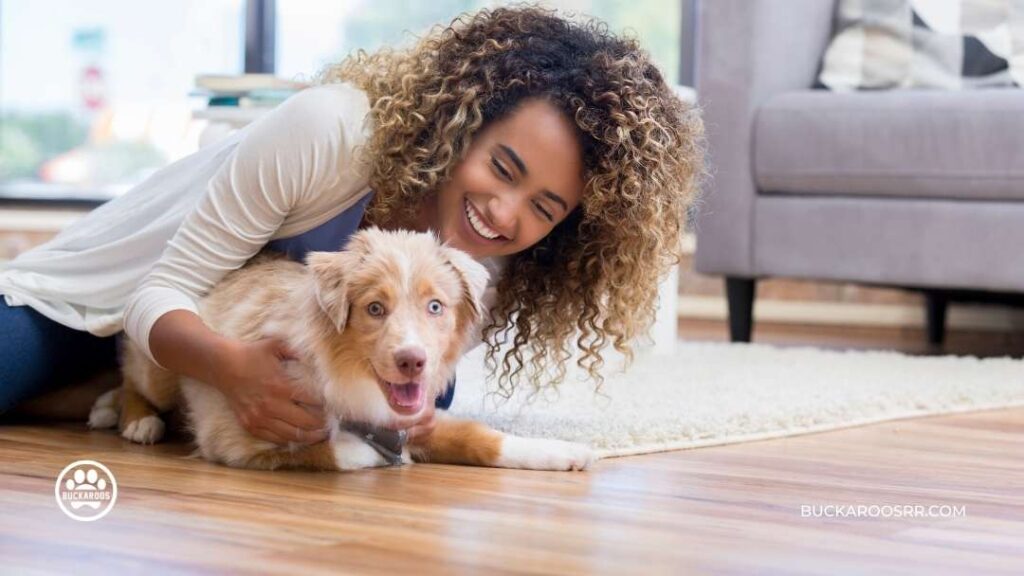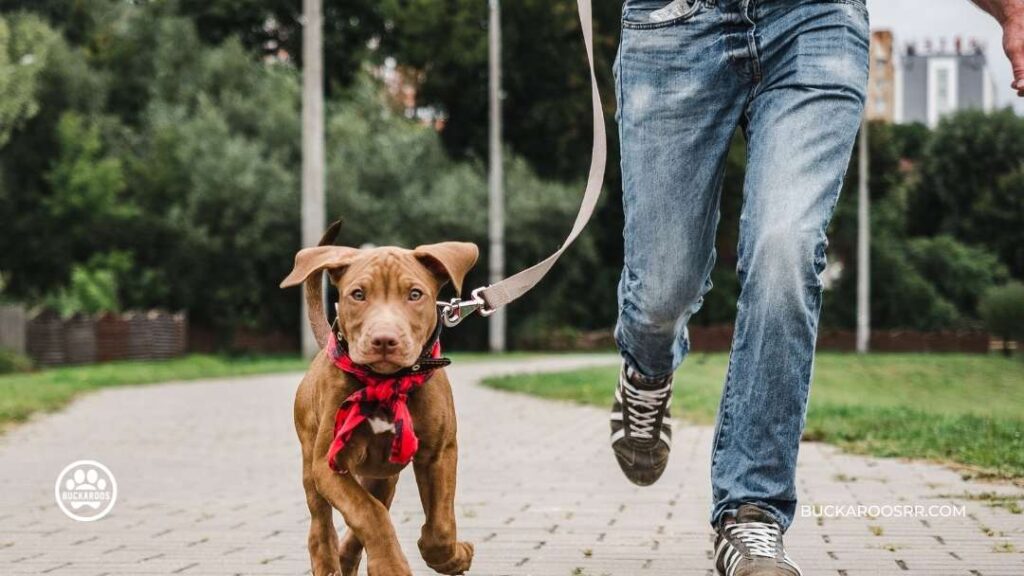Training Puppies is an essential aspect of dog ownership in modern society. By teaching our dogs obedience, we can ensure they become well-behaved community members. But the most challenging part is to decide – How early can you start training a puppy? watch the video here
There is no such thing as a perfect puppy! The only element that decides your dog’s obedience depends on how well you train them. And it is a given that the more effort you put in, the better results you’ll get. But there are certain limitations and obstacles, and the major one is deciding at what age we should start training puppies.

Basic Training For Puppies
A puppy’s training starts once they are welcomed into the family. Devise a puppy training schedule week-by-week for guided progress and favorable results.
A puppy is almost around 7 to 9 weeks old when they are usually brought to the house. Your pup is at a crucial stage in its life during this phase. They are new at socializing, and everything in the house is unique from their perspective. Even the rest of the family members are strangers. Hence some basic training is necessary at this stage, like:
- Responding to their name – familiarise your dog with their name by treating them whenever they promptly respond. Increase the frequency of calling them out when they are in the training phase and keep rewarding them till they are entirely responsive.
- Devise a schedule – the more you are regular at things, the better the puppies can follow. Plan their daily schedule and stick to it, so there is coherence. Their meal times, snack times, water times, potty times, play times, etc., should have a specific time slot.
- Basic commands – Initially, the most important commands to teach your dog would be ‘Stop,’ ‘Sit,’ and ‘Come.’ These commands are the starting points for any further obedience commands. It also puts them into a calming position like ‘Sit’ and ‘Come,’ and the ‘Stop’ command will work everywhere for the rest of their lives.
You can even read through our 5 Minutes Basic Dog Training Exercises to see how to train the dogs to follow these commands effectively.
- Potty Training – No matter what age we should start training puppies. Potty training should be the most essential and immediate one. Incorporating a potty schedule is the best way to prepare your pup for when and where to go.
- Crate training – requires not just adjusting to it but also creating a threshold. Your puppy should be trained not to burst out of the crate and be calm and patient. They should be able to accept it as their new home, which will also help control their anxiety. Hence crate training is a very beneficial trait to train your dog for.
- Basic manners – train them to recognize chewable and non-chewable items. This can be done during playtime with toys and various household items. Treat them for differentiating between toys that they should be mouthing and chewing. Any other thing they try to play with should be discouraged.
- Socializing – Introducing your pup to new people during their socialization process is key to helping them build positive relationships with other people. It’s essential to start this process early on in their life, and the best way to do so is by starting with your family and close friends first. This will help your pup feel more confident when meeting new people.

What Should A Puppy Be Taught Later On
At 10 – 12 weeks, you may want to enhance the training in areas like commands, behavior, socializing with more people, and impulse reactions.
- Harness and Leash: Introduce your puppy to their leash and harness at 8-10 weeks old if you haven’t already done so. These will turn out to be the two most valuable pieces of equipment in your pup’s and your life when outdoors.
Let your puppy get acquainted with the harness and leash. You begin with letting them wear it in the house and treat them while putting on or removing it. Doing this will help your puppy associate their leash and harness with positive experiences, making it more likely to enjoy wearing them when they’re out and about with you.
And if you want to get a heads up read our blog about how to walk your dog easily.
- Introduce more commands – you can further train your puppy to ‘Place,’ ‘Heel,’ and ‘Down.’ You can introduce these commands at home and then take them outdoors for a walk.
- Enhanced Socializing: It’s important to introduce your puppy to new people and other dogs after they’ve been vaccinated. A secure way is to let your puppy visit a daycare center to hang out and play with similar pups. Buckaroos 360 provides a safe and supervised environment so your puppy can enjoy a play date and expand its social circle.
Additionally, start getting them familiar with everyday noises outside the house. You can use media to let them hear in everyday situations such as construction site machinery, traffic, car horns, garbage trucks, sirens, etc. This will prevent anxiety and reluctance in new and unfamiliar environments. But on occasional events, you might need to figure out another strategy. Read Prepare Your Dog For Fireworks 4th July Independence Day.
- Controlling impulse reactions – your dog must learn not to react impulsively. Whether barging out of the crate, eating food, or drinking water, they should remain calm and wait for your signal to start. This impulse control practice helps with more complex training later on and boosts their threshold.

Puppy Training Schedule By Age Should Become More Complex
Once your pup is around 4- 6 months, you can start working on more complex training routines that build upon the commands they have already learned!
A combination of commands should be practiced to keep them on their paws. There should be fewer threats so that the commands become a vital part of their obedience.
It is also an excellent time to start training for disapproval commands like ‘Leave it’ or ‘Drop It’ and maybe even a ‘No.’ again, the training begins with treats and should be practiced till they can follow willingly and spontaneously.
Extending the canvas – You can also take them for walks to newer neighborhoods but keep it slow and steady. Training your dog to walk along with you is also a hectic, tried, and tested procedure. Once that is accomplished, and the commands are retained, you will easily take your dog to places without any regrets.
You can also introduce them to more physical games and extend their playtime. More frequent visits to the park or extended Daycare stays can help build their physique and keep them active.

Training Sessions Up To The Age Of 1 Year
Six months to 1 year is the age at which your dog is trained in most of the commands and is now an obedient house member. They can tell when to go, and walks are more relaxing and productive. They hardly embarrass you at new places and know the Dos and Don’ts around the house.
However, the training does not stop! They must be taught and trained about anything new that is expected to happen around them. Even if you decide to add another pet to the family, it is important that you gradually train them to be around them for the safety of the pet and themselves.
Similarly, if you are shifting to a new house, remember it will be difficult for them to adjust. And you never know, some basic training might need to be done again.
FAQs
How many times a day should I be Training Puppies ?
Training your pet dog doesn’t have to be a long and strenuous process. Once or maybe twice a day is great for the early training sessions. The session duration should also not exceed more than 15 minutes, which is the maximum. We need to ensure that we do not overwork them.
What is the first thing you should train your puppy?
The first things a puppy needs to learn are some basic commands along with potty training. Some basic manners certainly include no biting. A puppy must also be introduced to some socialization skills, including family members and frequent visitors.
To Sum Up
Consistency and patience are the two significant aspects a dog owner must possess. Training your new pup sums up to improved socializing and experiencing new sights and sounds. Regular potty schedules gradually increase the duration between potty breaks. The first year of your puppy’s life needs to focus on initial obedience development. Some good manners that your pup needs to learn include, no barking and biting in the house and other general pieces of training like scheduling potty and feeding times. By doing this consistently, you can be satisfied that your pup will develop lifelong good behavior.





